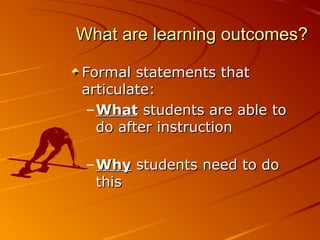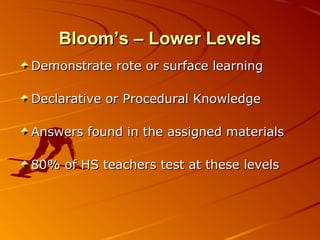The document discusses learning outcomes and best practices for writing them. It defines learning outcomes as formal statements that articulate what students will be able to do after instruction and why it is important for them to do so. Developing clear learning outcomes is important for accountability, accreditation, and continuous improvement by showing evidence of student learning. The document provides guidance on writing measurable outcomes using verbs and aligning them with different levels of Bloom's taxonomy. It emphasizes the importance of outcomes being clear, integrated, developmental, and measurable.






























